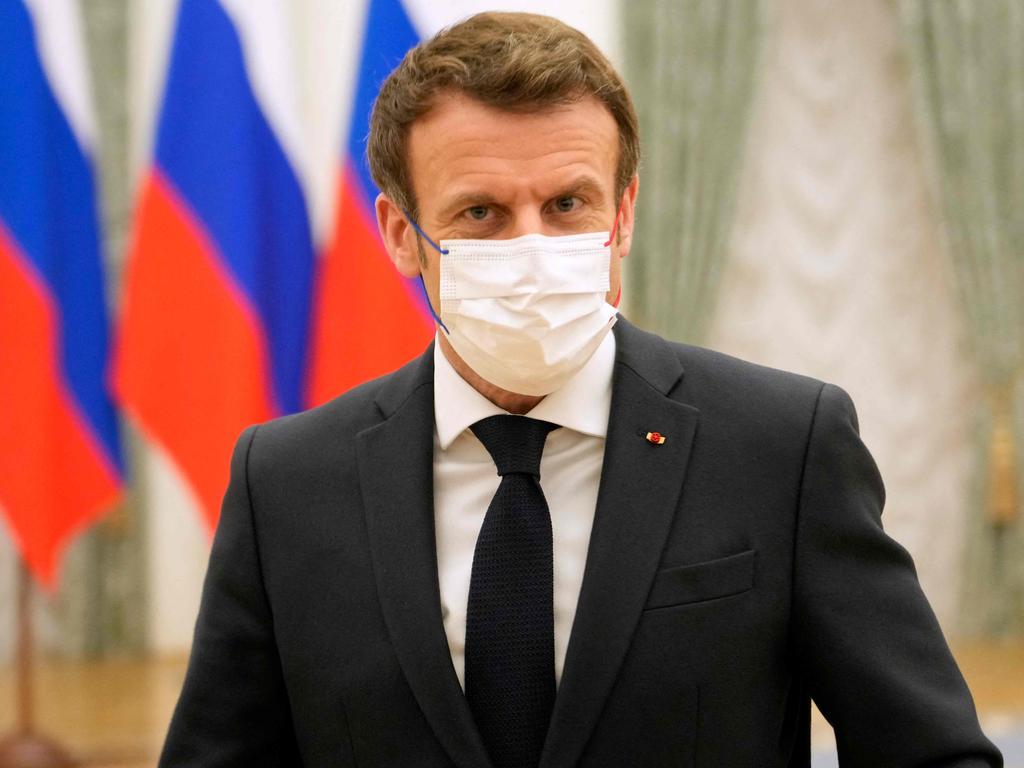Path to Ukrainian resilience lies through Poland

On Friday, the Quadrilateral Security Dialogue foreign ministers are meeting in Melbourne, and Scott Morrison has made Ukraine the first item on the agenda. Precisely what business the Quad – an Indo-Pacific grouping of Australia, India, Japan and the US – has in Ukraine, he didn’t say. If Morrison really wants to help Ukraine, he shouldn’t waste time talking to maritime powerhouses such as India and Japan. He should be talking to Poland.
Australia will be celebrating 50 years of diplomatic relations with Poland on February 20, but for most of that half-century the relationship has been dominated by immigration, not security. It may be time for that to change.
The US has sent 1700 paratroopers to Poland (enough but, according to Joe Biden, “not too many”) to counter potential Russian aggression in Ukraine. The troops will reinforce the US-led NATO battlegroup already based in Poland, which shares a 530km. border with Ukraine. Three other NATO members (Slovakia, Hungary and Romania) also border Ukraine, but the mountainous road links across those borders are relatively tenuous. And Poland is the only NATO neighbour of Ukraine to maintain a serious military capability, spending more on defence than the other three countries combined.
No one expects Australia to send troops to eastern Europe. But Australia could do more to support Poland in its efforts to build resilience and civil society in Ukraine. Unlike US involvement in Ukraine, Polish outreach in the country is non-politicised and enjoys broad multi-party backing. If Australia wants to work with trusted partners to provide purely civil assistance for Ukraine, it can find them in Poland.

Polish diplomats, often working alongside colleagues from Lithuania, also are quietly promoting Ukraine in Washington and Brussels. This tripartite Poland-Lithuania-Ukraine diplomatic partnership recently moved into the open with the formation of the Lublin Triangle, a multinational grouping dedicated to Ukraine’s European integration.
In the long run (and potentially even in the short run), strengthening Ukraine’s society may prove more important than strengthening its military. Analysts are right to warn of the threat posed by Russia to international norms, to say nothing of Ukraine’s security. But few have presented a realistic case for what Vladimir Putin actually wants in Ukraine. It is not at all clear that what he wants is an outright shooting war.
The reason may be that Putin’s real goals lie elsewhere. After all, he annexed Crimea and secured the future of Russia’s naval base at Sebastopol in 2014. He has supported separatist rebels in eastern Ukraine for almost a decade. He has stymied progress towards NATO membership for Ukraine while keeping an increasingly restive Belarus under his thumb.
He has little to gain from an open conflict. Putin’s priorities this time are likelier to be political than military. He is seeking to sow discord in NATO and in the EU by pushing member states in opposite directions, especially by playing Germany against Poland.
In intra-European disputes, former US president Donald Trump came down firmly on Poland’s side. Biden has decisively reversed course. In May last year Biden controversially lifted Trump-era economic sanctions that were preventing completion of a submarine pipeline that will deliver Russian natural gas directly to Germany, bypassing Poland and Ukraine.
Once open, the pipeline will increase Germany’s energy dependence on Russia permanently, while reducing the political leverage of former pipeline transit countries such as Ukraine. It’s easy to see why Russia wants the pipeline. Germany’s reasons for wanting to cut Poland and Ukraine out of its energy supply network can only be guessed at.
Germany’s new chancellor, Olaf Scholz, took office in December insisting that the pipeline project was above politics. He has since conceded it may have to be suspended in case of an outright Russian attack on Ukraine. Scholz likely made that concession only because, contra Biden, there is little chance Russia will actually invade.
That’s because the real purpose of Putin’s renewed political theatre isn’t to threaten Ukraine. Ukrainians have grown accustomed to Russia’s threats and Ukraine’s political leaders repeatedly have downplayed the sense of impending crisis. Putin’s real audiences are in Washington, Brussels, and Berlin. The biggest target of Russian aggression isn’t Ukraine per se; it’s Western unity in general.
Salvatore Babones is an associate professor at the University of Sydney.






Basking in the Olympic spirit in Beijing last week, Russia and China announced an agreement to “stand against attempts by external forces to undermine security and stability in their common adjacent regions”. For the uninitiated, that means Ukraine and Taiwan, respectively. Just how they can help each other on the opposite ends of Eurasia went unsaid, but unsaid is the default mode of international relations in today’s world. Just ask the Quad.